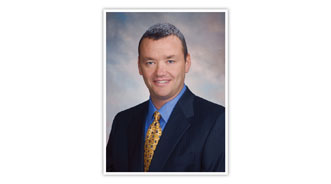CarMax CEO Says Improved Credit Availability Bolstered 3Q Used-Sales Comparables

RICHMOND, Va. -
In addition to announcing the most-searched for 2010 used vehicles on its site, CarMax revealed that comparable-store used sales climbed 16 percent for the fiscal third quarter.
Explaining this uptick to investors, the chief executive officer said this figure represents the company’s strongest comparable in several years.
“We are pleased to report another quarter of solid increases in sales,” said Tom Folliard, president and CEO. “Comparable-store used-unit sales increased 16 percent, representing our strongest comps in several years.”
This growth was fueled by a continued rebound in consumer traffic, as well as an improvement in sales conversion, he added.
“We believe a portion of the rise in sales conversion reflected improvements in consumer credit availability,” he highlighted.
Total used sales, meanwhile, showed an even higher upswing at 18 percent for the period, while net sales and operating revenues increased 23 percent to $2.12 billion from $1.73 billion in the same time frame of the prior year.
Net income increased to $82.4 million, or $0.36 per diluted share, compared with $74.6 million, or $0.33 per diluted share, earned in the same period of fiscal 2010.
Company officials noted, “In the third quarter of last year, net earnings were increased by $0.09 per shared for CarMax Auto Finance favorable adjustments, primarily related to market-to-market increases in the fair value of retained subordinated bonds and a reduction in the funding costs of loans originated in previous periods.”
Reviewing wholesale trends, management said these sales climbed 26 percent against the third quarter of fiscal 2010.
“The improvement reflected increases in both appraisal traffic and our appraisal buy rate,” the team indicated. “Similar to the last several quarters, we believe the rebound in the appraisal buy rate was driven primarily by the strength of whole industry used-vehicle pricing, which has allowed us to provide higher appraisal offers.”
According to CarMax, other sales and revenues were up 17 percent compared with the previous year’s same period. Extended service plan (ESP) revenues grew 31 percent, thanks to both an upswing in used sales and an increase in ESP penetration.
“ESP penetration benefited from refinements in the plan design implemented earlier this fiscal year,” officials pointed out.
Continuing on, service department sales were comparable to the prior-year period, as these resources tended to be used mostly for reconditioning, management noted.
Furthermore, the company said net third-party finance fees declined a bit as an increase in fees received from third-party providers was more than offset by the effect of an increase in the percentage of sales covered by subprime finance providers.
Discussing additional trends, management reported that total gross profit increased 23 percent to $297.9 million for the quarter, mostly due to increases in used and wholesale unit sales as well as ESP revenues. Apparently there was also an improvement in total gross profit dollars per retailed unit. Gross profit per retailed unit was up $127 to $3,175, in comparison to $3,048, which is where it stood in the prior fiscal year.
However, used-vehicle gross profit per unit of $2,103 was comparable with the $2,100 figure reported in the earlier fiscal year.
As for wholesale gross profit per unit, this came in at $878, compared with $827.
“The continued strength of our wholesale profits reflected the favorable wholesale pricing environment, as well as the continued strong dealer attendance and resulting dealer-to-car ratios at our auctions,” management highlighted.
CarMax Auto Finance
When going into CAF results, management clarified that effective March 1,2010, the company adopted new accounting standards that means the team must now recognize all transfers of auto loan receivables into a securitization transaction as secured borrowings.
Basically, beginning in fiscal 2011, CAF income no longer included a gain on the sale of loans via securitization transactions, but rather reflects the interest and certain other income associated with the auto loan receivables minus the interest expense associated with the non-recourse notes payable issued to fund the receivables, direct CAF expenses and a provision for estimated loan losses.
After getting through the tongue twister of financial speak, management reported that CAF income came in at $55.7 million, compared with $65.8 million.
“In the prior-year period, CAF income was increased by adjustments totaling $31.6 million related to loans originated in previous fiscal periods. These adjustments included $17.6 million of favorable market-to-market adjustments on retained subordinated bonds and $11.9 million related to more favorable funding costs for auto loans refinanced during the quarter that had been originated in earlier periods,” officials noted.
In the final aspect of its financial news, CarMax touched upon SG&A, reporting that selling, general and administrative expenses were up 14 percent to $219.7 million from $192.1 million. This is compared with a 23 percent increase in total revenues, management stressed.
“The increase in SG&A primarily reflected increases in sales commissions and other variable costs associated with the growth in unit sales and higher advertising expense,” management explained.
“As sales trends have improved, we have targeted higher levels of advertising expenditures. The SG&A ratio improved to 10.4 percent in the current year’s quarter compared with 11.1 percent in the prior year’s quarter, reflecting the leveraged associated with the increases in both unit sales and average selling prices,” the team added.
Top 10 Most-Searched for Models on CarMax.com
In a final bit of news, CarMax management said the Ford F-150 knocked the Honda Accord from first place as this year’s most-searched for vehicle on CarMax.com.
The most-searched for used vehicles included:
1. Ford F-150
2. Chevrolet Tahoe
3. Ford Mustang
4. Honda Accord
5. Jeep Wrangler
6. Nissan Altima
7. Honda Civic
8. Chevrolet Silverado
9. Chevrolet Tacoma
10. Toyota Camry
Officials noted that this data excludes December.


